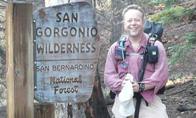As we were descending Icehouse Canyon Saturday afternoon 5/28, about 10 SAR personnel were headed to the saddle. They were rolling a gurney with a single, large wheel on the bottom. As they passed, we heard a radio message: "She is stable and alert. The injury is wrapped." We didn't see anything at the saddle. The only info I can find are these tweets by West Valley SAR:
@WVSAR
West Valley SAR working rescue in Ice House Canyon. Will be requesting additional manpower. 4 mile carry out.
@WVSAR
Rescue completed in Ice House Canyom. 3.5 mile carry out. THANK YOU ALL WHO RESPONDED. Rimsar, Cave & SBMTN SAR.
Icehouse Canyon rescue
-
Hikin_Jim

- Posts: 4688
- Joined: Thu Sep 27, 2007 9:04 pm
The one wheeled "gurney" you saw is called a Stokes Litter.
Four different SAR teams responded? That's a pretty big call out.
HJ
Four different SAR teams responded? That's a pretty big call out.
HJ
-
whatmeworry
- Posts: 57
- Joined: Tue Mar 03, 2009 1:28 pm
Jim is right.
The basket is a typically called a Stokes litter or just a litter. Stokes is the name of the individual who developed the "modern" design.
The use of the wheel goes back quite a while with a lot of variations out there. One of the most widely used wheel designs was created by Russ Anderson of Sierra Madre Search and Rescue.
The wheel typically attaches to the frame rail of the litter and allows the weight of the patient to be carried by the wheel vs. rescuer's backs. This is a very big deal for any extended evacuation. The litter can be managed relatively easily by a small # of rescuers. It is still a LOT of work - particularly over long distances. Hand carrying a litter over those same distances would take many times the # of personnel and be far more uncomfortable for the patient.
Rotating people on and off the litter to prevent fatigue (and injuries) is standard practice. Mutual aid between various teams is very common and might involve a modest # of people from each team helping with the evacuation.
http://www.cmcrescue.com/product.php?Ca ... 2ef1e4fd7f
The basket is a typically called a Stokes litter or just a litter. Stokes is the name of the individual who developed the "modern" design.
The use of the wheel goes back quite a while with a lot of variations out there. One of the most widely used wheel designs was created by Russ Anderson of Sierra Madre Search and Rescue.
The wheel typically attaches to the frame rail of the litter and allows the weight of the patient to be carried by the wheel vs. rescuer's backs. This is a very big deal for any extended evacuation. The litter can be managed relatively easily by a small # of rescuers. It is still a LOT of work - particularly over long distances. Hand carrying a litter over those same distances would take many times the # of personnel and be far more uncomfortable for the patient.
Rotating people on and off the litter to prevent fatigue (and injuries) is standard practice. Mutual aid between various teams is very common and might involve a modest # of people from each team helping with the evacuation.
http://www.cmcrescue.com/product.php?Ca ... 2ef1e4fd7f
